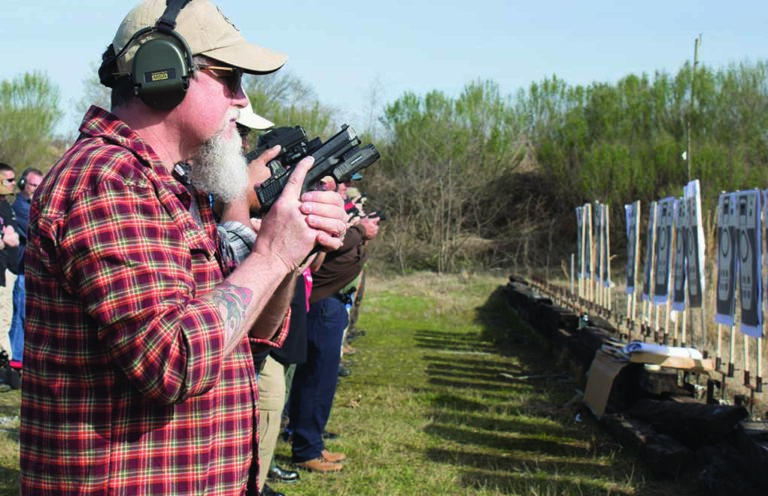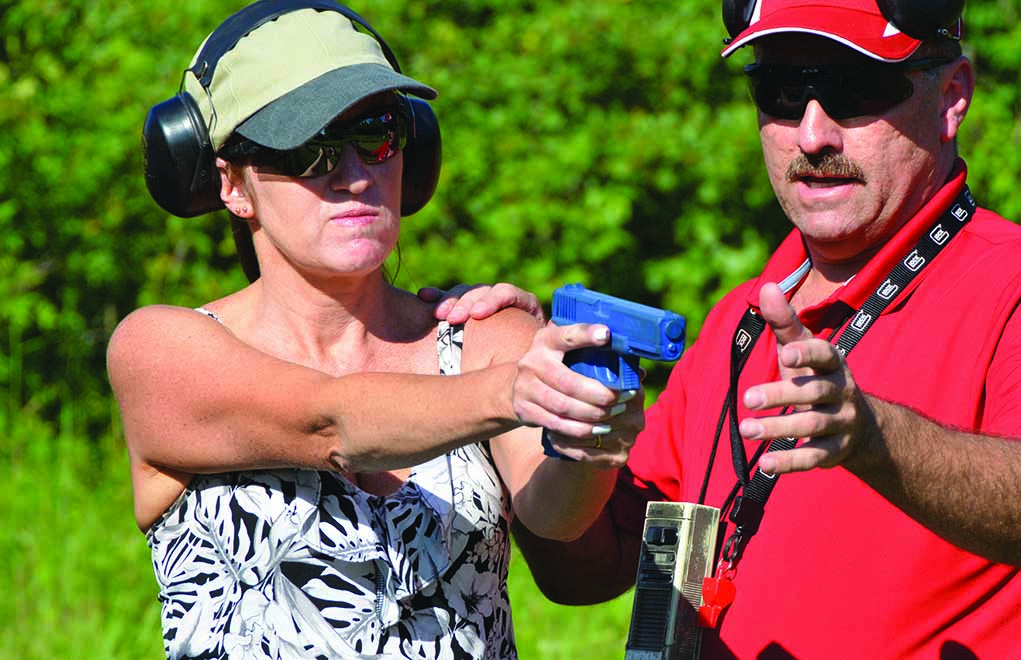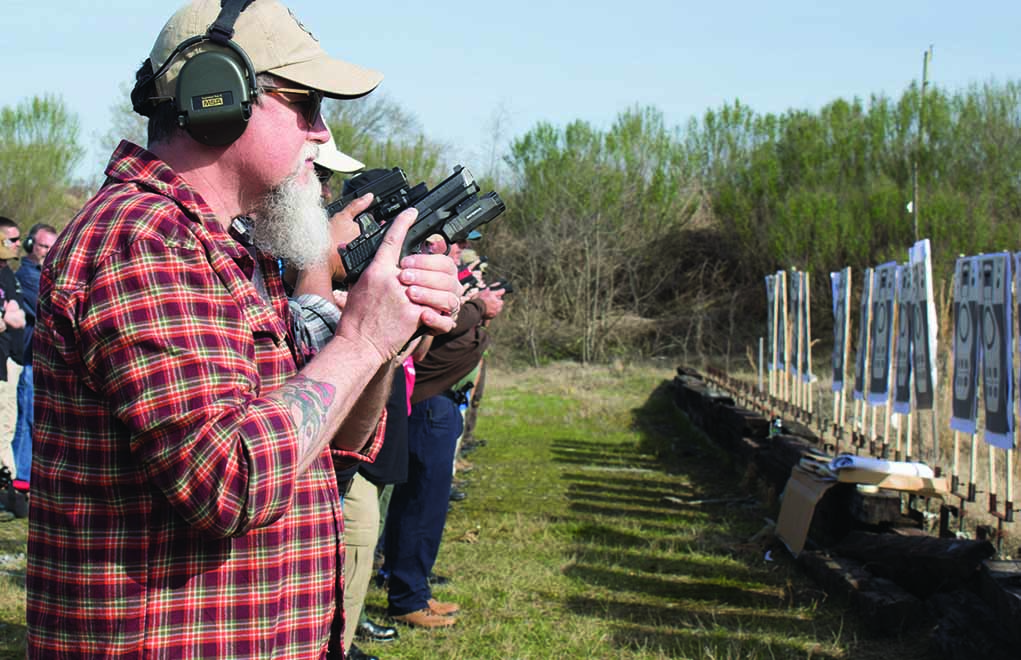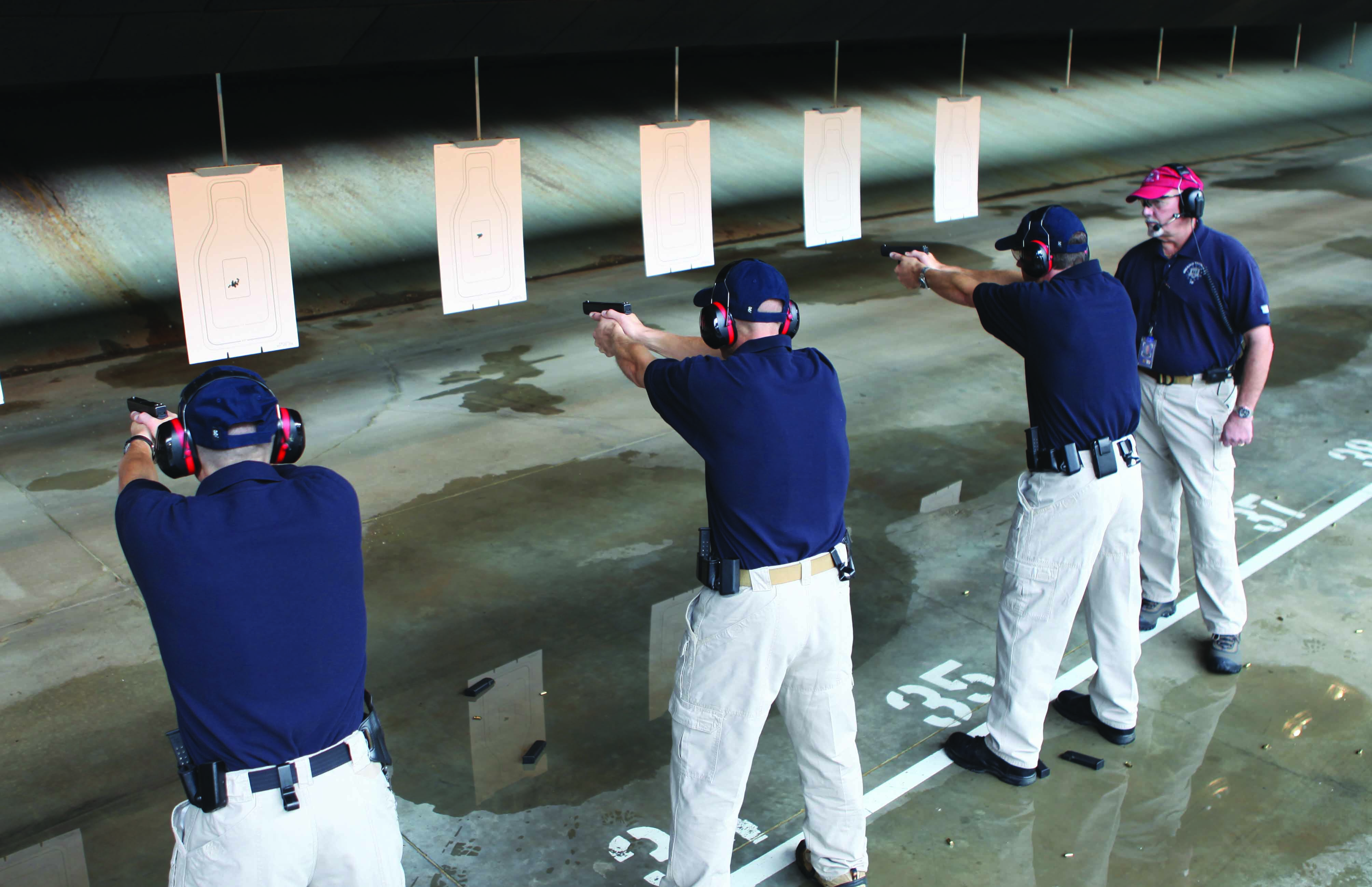
Knowing how to shoot isn’t everything. When it comes to self-defense training, the whole package is essential — physical, mental and legal training.
What sort of self-defense training should armed citizens strive for:
- Dynamic firearms training, i.e. shooting on the move
- Low-light shooting
- Threat recognition
- Threat avoidance
- Legal employment of deadly force
Sure, you know how to shoot a gun. Perhaps you have even taken a basic class to get your concealed carry license. You go to the range a few times a year and shoot. So, you ask yourself, “Why do I need training? I know how to shoot.”

My answer, as a 30-plus year professional firearms instructor, is: “Sure, you know how to shoot, but can you actually use your skills to defend yourself? And, just as importantly, once you defend yourself, can you prove that your actions were legal?”
You see, just knowing how to shoot a handgun alone is not sufficient for keeping a gun at home for self-defense, or for carrying one when you’re out and about. Consider this …
Law Enforcement Vs. Civilian Training
Society demands that its protectors (law enforcement) be well trained, both in the physical use of the many different implements they might use to protect you and also in the legal use of force, both deadly and otherwise. This takes the typical police academy more than 80 hours to train the techniques and learn the decision-making lessons necessary for the recruit to go out and successfully perform on the street. After all, they know the officers will be going up against burglars, rapists, robbers and perhaps even killers. You know — the dregs of society.
But, knowing how dangerous it might be, police typically have patrol partners, instant two-way radio communications so they can summon even more back-up officers and are issued bulletproof vests. And, if that wasn’t enough, they also get continuing training (known as in-service training) to keep their skills sharp.
Society — through their state legislatures, which fund the basic recruit academies in the many states of the union — has demanded that police receive this training. If the training isn’t sufficient, then the courts have stepped in and made the police agencies step up their training. Case in point, Popow v. City of Margate, 476 F. Supp. 1237 (D.N.J. 1979).
More Self-Defense Training Articles:
- 5 Critical Elements Of A Handgun Training Program
- Immersive Defensive Firearms Training
- Is Competitive Shooting Good Training?
- 7 Defensive Handgun Training Myths
Popow v. Margate was a 1979 civil suit by the widow of a gentleman (Popow) who was shot and killed by a Margate, New Jersey, police officer during a running gun battle down the streets of Margate. Popow was on his front porch, an innocent bystander, when one of the bullets the police fired hit and killed him. At the time, training for police officers was limited to simply standing still on a shooting range and firing a qualification course twice per year. They received no training on how to move and shoot, no training on how to shoot in the dark and no training on how to shoot at moving targets. Thus, when all the facts of the case were presented, the 3rd Federal Court of Appeals, said:
“The only continuing training was shooting instruction approximately every 6 months at a range in Atlantic County. However, there was no instruction on shooting at a moving target, night shooting or shooting in residential areas. Margate is almost completely residential. The possibility that a Margate police officer will, in the course of his duties, have to chase a suspect in a residential area at night is not in the least remote; therefore, a finder of fact could determine that the City of Margate’s training of officers regarding shooting was grossly inadequate within the Leite Standard. Furthermore, the officers viewed no films or participated in any simulations designed to teach them how the state law, city regulations or policies on shooting applied in practice.”
To clarify what the Leite Standard is, we must refer to another Federal District Court case, in which the City of Providence, Rhode Island was sued over the issue of deficient police training. That opinion stated in part:
“In light of the responsibility, authority and force that police normally wield, a municipality is fairly considered to have actual or imputed knowledge of the almost inevitable consequences that arise from the nonexistent or grossly inadequate training and supervising of a police force. If the plaintiff’s injury results from the complete lack of training or grossly inadequate training of a police force, such an injury is not the result of mere negligence but the result of a deliberate and conscious indifference by the city. The training and supervising of these police officers must be so inadequate and the resulting misconduct so probable, that the city can fairly be considered to have acquiesced in the probability of serious police misconduct.”
You might be wondering, Okay, but I am not a police officer, so how does all this apply to me?
Plan For Peace, Prepare For War
As the president of the first “Post Self-Defense Assistance” program, the Armed Citizens’ Legal Defense Network, Inc., I’m very much concerned about whether or not one of our members might be sued for wrongful death if they mistakenly use deadly force.

When a Federal District Court uses the label “grossly inadequate,” coupled with the term “gross negligence” to refer to police officer training, it gets my attention. If a court can find a police agency culpable for the death of an innocent person because they failed to properly train their officers, might not the same thinking prevail in a lawsuit against an armed citizen who did not bother to train with their self-defense firearm, who is responsible for mishap?
The courts will recognize a mistake, and in fact in most jurisdictions there is a statutory construct known as “accidental homicide” where a person kills another, but without any malice, even though the deceased had not been acting in a manner which would allow for the use of justifiable deadly force. But, if the individual shooter had no documented training and the mistake occurred, then I can see the logical leap from a civil rights deprivation claim in the case of a law enforcement case, to a gross negligence claim in a non-law enforcement case.
How do we combat this issue?
Well, first off, if the armed citizen wants to prevail in a negligence suit against them, then they will be far ahead of the curve if they can show proof of training (documented training), which indicates that they trained on occasion to be able to confront an anticipated violent criminal attack against them or their family. This means, occasionally training on gun manipulation, marksmanship and, because we don’t live on a static shooting range but instead in a world that’s constantly moving about, we need to train on moving targets and shooting on the move. And additionally, because our world is also in low-light half the time, we need to do this in the dark, too.
Cognitive Conditioning
Additionally, there’s the psychological aspect of being trained and prepared. The well-trained individual, who has participated in self-defense training courses with other like-minded people and who knows that his or her skills are at the top of the class, are much less likely to encounter violent situations. Why? There are two reasons.
First, self-defense training with firearms often includes training in observation and awareness skills, and it has been my experience that the well-trained individual will oft times identify and avoid possible conflicts before they become critical. Secondly, highly skilled individuals carry themselves just a little differently, and when a criminal is choosing a potential victim, they will often say to themselves, “No, that’s not an easy target.” You will be deselected for criminal attack, and you didn’t even know you were being considered.

So, how does one find such training? In this day and age of the Internet, it’s very easy to find competent training. But don’t just sign up for the first local class you discover. Do your research, including calling and talking to the instructor. Explain your concerns and what you want to learn. Be specific. Also, see if you can find referrals and or reviews of the course in which you are interested before enrolling.
Additionally, there are several itinerant instructors, who are top notch and travel, and who incorporate this type of training in their class offerings. And, there is the opportunity to travel to access self-defense training if you have the money to do so. I know that at my own school, The Firearms Academy of Seattle, we have purposely included low light, moving targets and shooting and moving into the curriculum at a very early stage in order to address the issues I have been discussing.
But, if attending self-defense training is not in your future, you can accomplish a lot of the documented shooting skills mentioned above by attending IDPA matches. There’s likely an IDPA club or two within an hour’s drive of your front door, and IDPA welcomes all safe and legal shooters. Find a club near you by going to the IDPA Web site, at IDPA.org.
One caveat though: You will have to be your own documenter of the stages and type of shooting you will be doing. Keeping a written journal of the stages and videotaping the different stages will go a long way toward meeting the requirements to show you participate in realistic training exercises. You don’t have to win the matches, just show that you’re safely participating.
The good news, though, is that you’ll likely improve your shooting skills, too, if you stick to it. And there’s nothing wrong with that.
Editor's Notes: This article originally appeared in the 2018 Concealed Carry issue of Gun Digest the Magazine.

Next Step: Get your FREE Printable Target Pack
Enhance your shooting precision with our 62 MOA Targets, perfect for rifles and handguns. Crafted in collaboration with Storm Tactical for accuracy and versatility.
Subscribe to the Gun Digest email newsletter and get your downloadable target pack sent straight to your inbox. Stay updated with the latest firearms info in the industry.

![Best Concealed Carry Guns In 2025 [Field Tested] Wilson Combat EDC X9S 1](https://gundigest.com/wp-content/uploads/Wilson-Combat-EDC-X9S-1-324x160.jpg)


![Best 9mm Carbine: Affordable PCCs [Tested] Ruger Carbine Shooting](https://gundigest.com/wp-content/uploads/Ruger-Carbine-Shooting-100x70.jpg)
![Best AR-15: Top Options Available Today [Field Tested] Harrington and Richardson PSA XM177E2 feature](https://gundigest.com/wp-content/uploads/Harrington-and-Richardson-PSA-XM177E2-feature-100x70.jpg)
